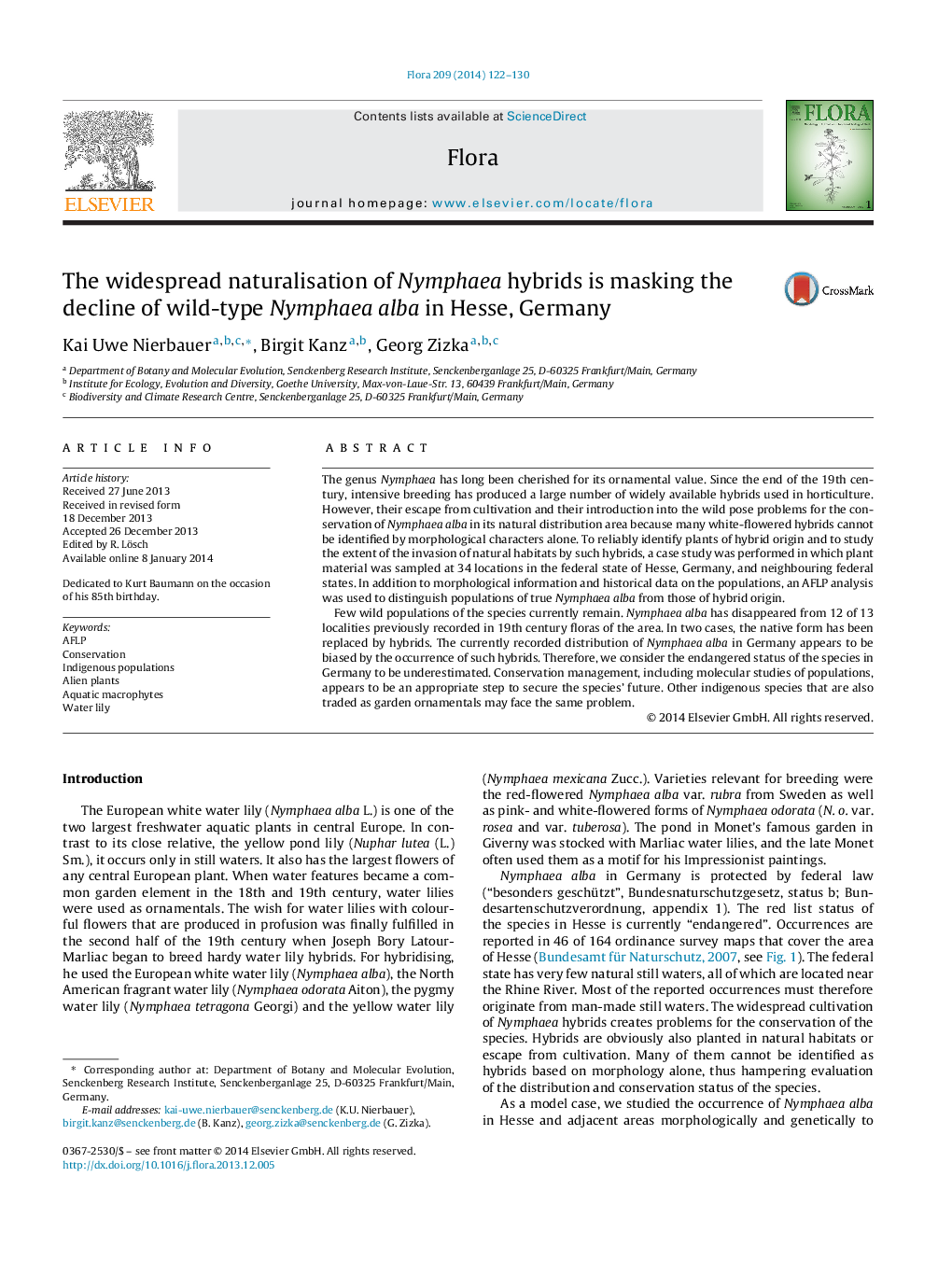| Article ID | Journal | Published Year | Pages | File Type |
|---|---|---|---|---|
| 2179607 | Flora - Morphology, Distribution, Functional Ecology of Plants | 2014 | 9 Pages |
The genus Nymphaea has long been cherished for its ornamental value. Since the end of the 19th century, intensive breeding has produced a large number of widely available hybrids used in horticulture. However, their escape from cultivation and their introduction into the wild pose problems for the conservation of Nymphaea alba in its natural distribution area because many white-flowered hybrids cannot be identified by morphological characters alone. To reliably identify plants of hybrid origin and to study the extent of the invasion of natural habitats by such hybrids, a case study was performed in which plant material was sampled at 34 locations in the federal state of Hesse, Germany, and neighbouring federal states. In addition to morphological information and historical data on the populations, an AFLP analysis was used to distinguish populations of true Nymphaea alba from those of hybrid origin.Few wild populations of the species currently remain. Nymphaea alba has disappeared from 12 of 13 localities previously recorded in 19th century floras of the area. In two cases, the native form has been replaced by hybrids. The currently recorded distribution of Nymphaea alba in Germany appears to be biased by the occurrence of such hybrids. Therefore, we consider the endangered status of the species in Germany to be underestimated. Conservation management, including molecular studies of populations, appears to be an appropriate step to secure the species’ future. Other indigenous species that are also traded as garden ornamentals may face the same problem.
